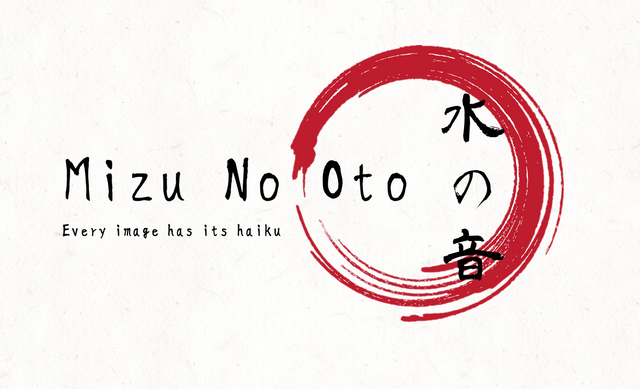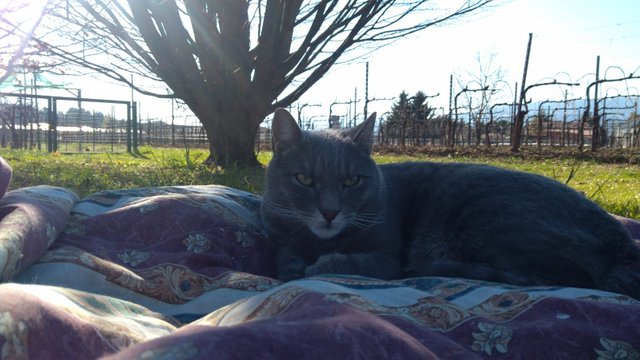Mizu No Oto - Cada Imagen Tiene su Haiku - Ediciòn #26

haiku de David Elliott en 2-4-5 (1992)
¡Bienvenidos a la 26ª edición del concurso Mizu No Oto, amigos del haiku!
Esta edición, como todas las demás ediciones pares, será para el haiku español.
Cada edición impar será para el haiku inglés.
Si desea leer algunas (bastante largo, lo siento) divagaciones teóricas sobre el haiku, puede desplazarse por la publicación hasta el final, más allá de la foto de prompt.
¡Que comience el concurso!
[English translation]
Welcome to the 26th edition of the Mizu No Oto contest, haiku friends!
This edition, as every other even edition, will be for Spanish haiku.
Every odd edition will be for English haiku.
If you want to read some (quite long, I’m sorry) theorical ramblings about haiku, you can scroll the post until the bottom, past the prompt photo.
Let’s the contest begin!


Para aquellos que quieren desatar su potencial poético, aquí está cómo funciona este concurso:
• Mire la imagen del mensaje y déjese inspirar por ella.
• Escribe un haiku relacionado con la imagen del mensaje. El haiku debe estar compuesto por 1-3 versos cortos sin título. La forma clásica de haiku es de 3 versos de 5/7/5 sílabas, pero se permiten otras formas, siempre y cuando permanezcan en absoluta brevedad.
• El haiku debe estar en español o incluir una traducción al español.
• Publique el haiku en su blog o en la sección de comentarios debajo de esta publicación. Si haces tu propia publicación, ¡no olvides poner el enlace en la sección de comentarios a continuación!
No olvides utilizar la etiqueta:
#haikucontest
Tenga cuidado con el comentario de @bananafish en esta publicación, bajo el cual puede emitir su voto (y tratar de ganar el premio al Mejor Comentario)
Únete a los Reinos de Bananafish en Discord y chatea con nosotros: https://discord.gg/ZWmEUWT

Prompt Image:

[photo by @marcoriccardi]

• Kireji (切れ字), un corte entre los versos primero y segundo, o entre el segundo y el tercero; el corte puede ser gramatical, como un signo de puntuación, o puede ser un corte en el significado, como dos imágenes diferentes.
• Kigo (季語), una referencia explícita o implícita a una temporada, que define la época del año en que se compone o hace referencia al haiku.
• Sabi (寂), el sentido del inexorable paso del tiempo, la belleza o la serenidad que acompañan al avance de la edad, cuando la vida de los objetos y su impermanencia se destacan por la pátina y el desgaste o por cualquier reparación visible.
• Wabi (侘寂), el gusto por las cosas frugales y naturales, la sencillez rústica, la frescura o el silencio; puede aplicarse tanto a objetos naturales como artificiales, o incluso a la elegancia no ostentosa.
• Mono no Aware (物の哀れ), empatía con la naturaleza y la vida humana; el "sentimiento de las cosas", la nostalgia, el arrepentimiento por el paso del tiempo, la comprensión del cambio y la transitoriedad sin sufrimiento.
• Yūgen (幽玄), sentido de maravilla y misterio; representa el estado mental producido por la inexplicable fascinación de las cosas, el sentimiento de un "otro" universo, lleno de misteriosa unidad.
• Karumi (軽み), belleza en simplicidad; La belleza poética se refleja en su simplicidad, libre de preconcepciones y juicios morales.
• Shiori (しおり), gentileza; la ligereza y el delicado encanto que irradia de los versos, donde las cosas se evocan en el lector sin agresividad ni excesiva explicación.

Fecha límite de presentación: miércoles 4 de abril, 10:00 p.m., GMT +1 (hora de Roma).
Los resultados saldrán el jueves 5 de abril, a las 10:00 p.m., GMT +1 (hora de Roma).

El kireji
Hoy me gustaría hablar sobre el último de los cuatro elementos estilísticos-estructurales del haiku: el kireji.
Recuerdo brevemente los otros tres: la ausencia de un título; el esquema métrico de 5-7-5 sílabas (o menos, en inglés); la falta de rimas voluntarias.
La palabra kireji (切れ字) en japonés significa "carácter que corta" e indica una categoría de palabras cortas, largas una o dos on, virtualmente intraducible en otros idiomas, que están a medio camino entre el nivel semántico y el puramente musical.
Si alguien ha realizado estudios clásicos y estudiado griego antiguo, seguramente recordará las dos partículas μέν... δέ. Eran intraducibles y se seguían en los textos como intercalares. Aquí, las palabras kireji del japonés son más o menos lo mismo.
Sus propósitos son principalmente dos.
Lo primero es crear una ruptura en la poesía, rítmica o semántica. Esta cesura se coloca al final de uno de los tres "versos" del haiku, nunca en una posición intermedia. Si el kireji se coloca al final del primer o segundo verso, sirve para delinear un desapego, a fin de permitir que la parte que viene después introduzca una imagen asociativa, comparativa o contrastante con la presentada al principio del haiku.
El kireji también se puede colocar al final del tercer verso: en este caso, crea un cierre suspendido e indefinido.
La segunda función del kireji es dar un tono poético al haiku. De hecho, las palabras kireji son las únicas en el haiku que no provienen del registro diario y coloquial, sino que son arcaicas y se usan solo en el contexto del lenguaje poético.
Inahata Teiko, presidente de la Asociación Tradicional Haiku, señala que lo fundamental es que el kireji es solo uno dentro de un haiku, porque la brevedad de la poesía es tal que si fueran más de uno, crearían una confusión de significado.
Las palabras kireji son dieciocho, pero las más utilizadas son solo cuatro: ya, ka, kana y keri (en orden creciente de "profundidad" de la cesura). Tenga en cuenta que, entre otras cosas, ocupan uno o dos on que se sustraen del total de 17; por lo tanto, el sentido de un haiku en realidad está contenido solo en 15 o 16 sílabas, lo que agudiza aún más su brevedad.
Y en otros idiomas? La práctica común es que los signos de puntuación se utilizan para indicar el kireji en un haiku escrito en un idioma que no sea el japonés. Por lo tanto, tendríamos ":", ",", ";", "..." o "." al final de uno de los tres versos para simbolizar la cesura, cuanto más decisiva es, más fuerte es el signo de puntuación.
Otro método, que prefiero, no es usar ninguna letra mayúscula o puntuación dentro del haiku, sino separar los dos "movimientos" con el guión "-".
Finalmente, un haiku en el idioma indoeuropeo, y en algunos casos raros también en japonés, puede no contener ningún signo que corte, pero aún tiene un kireji determinado por el sentido.
Un ejemplo es este haiku de Marco Pilotto:
la pioggia estiva
a pelo d'acqua i pesci
baciano il cielo
(la lluvia estival
en el agua los peces
besan el cielo)
[English translation]
The kireji
Today I would like to talk about the last of the four stylistic-structural elements of haiku: kireji.
I briefly remember the other three: the absence of a title; the metric scheme of 5-7-5 syllables (or less, in English); the lack of voluntary rhymes.
The word kireji (切れ字) in Japanese means "character that cuts" and indicates a category of short words, one or two on long, virtually untranslatable in other languages, which are halfway between the semantic level and the purely musical.
If someone has done classical studies and studied ancient Greek, they will surely remember the two particles μέν... δέ. They were untranslatable and followed in the texts as intercalary. Here, the kireji words of Japanese are more or less the same.
Their purposes are mainly two.
The first thing is to create a rhythmic or semantic break in poetry. This cut is placed at the end of one of the three "verses" of the haiku, never in an intermediate position. If the kireji is placed at the end of the first or second verse, it serves to delineate a detachment, in order to allow the next part to introduce an associative, comparative or contrasting image, compared with that presented at the beginning of the haiku.
The kireji can also be placed at the end of the third verse: in this case, it creates a suspended and undefined closure.
The second function of the kireji is to give a poetic tone to the haiku. In fact, the kireji words are the only ones in haiku that do not come from the daily and colloquial register, but are archaic and are, used only in the context of poetic language.
Inahata Teiko, president of the Traditional Haiku Association, points out that the fundamental thing is that the kireji is only one within a haiku, because the brevity of the poetry is such, that if they were more than one, they would create a confusion of meaning.
The kireji words are eighteen, but the most used are only four: ya, ka, kana and keri (in increasing order of "depth" of the cut). Note that, among other things, they occupy one or two on, that are subtracted from the total of 17; therefore, the meaning of a haiku is actually contained only in 15 or 16 syllables, which further sharpens its brevity.
And in other languages? The common practice is that punctuation marks are used to indicate kireji in a haiku written in a language other than Japanese. Therefore, we would have ":", ",", ";", "..." or "." at the end of one of the three verses to symbolize the cut; the more decisive the cut is, the stronger the punctuation mark.
Another method, which I prefer, is not to use any capital letter or punctuation within the haiku, but to separate the two "movements" with the hyphen "-".
Finally, a haiku in the Indo-European language, and in some rare cases also in Japanese, may not contain any signs that cut, but still have a kireji determined by the sense.
An example is this Marco Pilotto haiku:
la pioggia estiva
a pelo d'acqua i pesci
baciano il cielo
(summer rain
fish in the surface
kiss the sky)

Buen Haiku a todos!
Su bananafish haiku fan #1


Let’s the Bananafish Tribe grow together!

With delegations, Bananafish VP will grow and consequently the upvotes given to every contest entry will be higher.
Following the voting trail is a way to make sure you always support the other participants to the Bananafish contests, automatically upvoting the posts (but not the comments) Bananafish upvotes.
Join the Bananafish Realms on Discord and chat with us: https://discord.gg/ZWmEUWT
If you’re interested, here you can find all the information needed.

[banner credit: @f3nix]
Other Bananafish awesome activities:
Bananafish Knights interesting creative works:
@cyemela:
Red Roses, an interesting audiobook which he describes as a “Shakespeare meets Voltaire retelling of Richard III [that] helps to change the perception of this former English King”.
You can find it here: https://www.downpour.com/red-roses?sp=274337
Steemit Blog: Contests, on Kindle or parperback, that “offers 180 pages of high octane performance driven Steemit blog contest entries from the author while giving you the contacts you’ll want to know in order to begin your contest career on the Steemit blockchain.”
https://www.amazon.com/gp/product/B07MVPT72Q?pf_rd_p=c2945051-950f-485c-b4df-15aac5223b10&pf_rd_r=JJKTKWBJWMDK97NQAVRR@dirge:
Reports on Trepidation, on Kindle, is a collection of short stories; “written with a preference for realism, these stories offer plausible scenarios of the grotesque, pessimistic or supernatural.”
https://www.amazon.com/dp/B07375V8PV



Leafless tree,
still provides shade for
resting cat
https://steemit.com/haikucontest/@wolffeys/my-entry-mizu-no-oto-every-image-has-its-haiku-edition-26
I know this week is for Spanish Haiku, so this is just for fun!
Thanks, @bananafish!!!
Ok, we love fun! Thanks for your "out of competition" haiku !
(Ps. luckily the tree isn't lifeless, it's preparing to bloom)
Leafless tree
preparing to bloom;
not lifeless
Just having some fun! ;)
Looking forward to future contests.. Thanks again, @bananafish!!!
My bad!!! Must be tired, I read wrong
Wow, el concurso está a tope :) Qué bien... Aquí mi aporte:
https://steemit.com/spanish/@salvao/mihaikuparaelconcursodebananafishedicin26espaol-m985a9iuvk
Descanso ocioso.
Recuerdos soleados
entre algodones.
Espectacular donde voto por tu post.
@sacra97, puedes votar bajo mi comentario que dice "Vota tu haiku preferido bajo ahì" en este post ;)
This post has been manually selected, curated and upvoted by CI mod staff team. Supporting all posts that are in high quality and don’t get enough recognition.
This post was submitted for curation by: @theironfelix
This post was voted: 100%
Saludos, amigos de @bananafish y participantes. Aquí les dejo el enlace del post con mi ejercicio. ¡Suerte para todos!
https://steemit.com/steempress/@josemalavem/mizunooto-cadaimagentienesuhaiku-edicin26-cri377uzm7
Hola, @josemalavem, bonito haiku. Me gustó mucho la segunda versión...ya que la imagen de la serenidad del gato transmite mucha dulzura. Suerte en el concurso.
https://steemit.com/spanish/@lecumberre/mizu-no-oto-cada-imagen-tiene-su-haiku-edicion-26
Buen haiku en el que ese permanente alerta de los gatos queda reflejado. Gracias por compartir. Suerte en el concurso.
Hola, Sayury. Sí, exactamente, un gato alerta. Je, je. Ojo pelao.
Bendiciones para todos los participantes. Por acá dejo mi entrada para esta semana.
Saludos cordiales para todos. Aquí dejo mi participación
https://steemit.com/haikucontest/@adonisr/mizu-no-oto-cada-imagen-tiene-su-haiku-edicion-26-mi-primer-haiku
Buenas tardes, aquí les dejo mi entrada:
https://steemit.com/haikucontest/@sayago/mizu-no-oto-cada-imagen-tiene-su-haiku-edicion-26
Saludos
Mi participaión: https://steemit.com/haikucontest/@amandaj/mizu-no-oto-cada-imagen-tiene-su-haiku-edicion-26
Acá les dejo mi participación https://steemit.com/haikucontest/@javert68justice/mizu-no-oto-cada-imagen-tiene-su-haiku-edicion-26